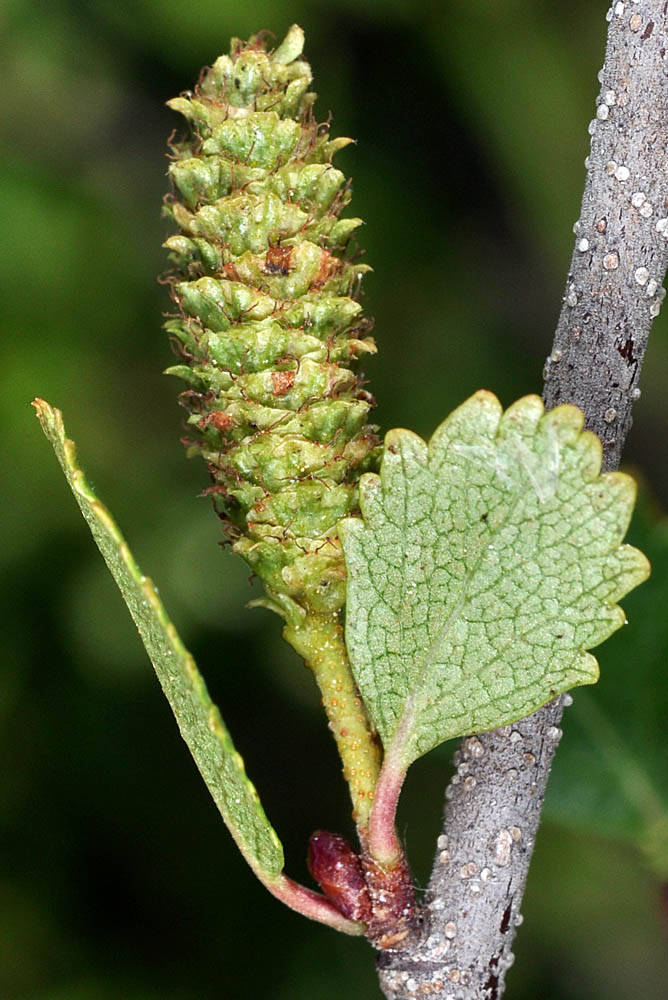Betula lenta
Betula glandulosa
resin birch
ascending, glabrous or puberulent with spreading hairs to 0.1 mm; dry or rarely glutinous near apex, with few to many resin-blisters.
blades elliptic to almost circular, 15–28 × 12–21 mm (on fertile branches; up to 37 × 31 mm on sterile branches), green above, light green beneath; firm but flexible, bases obtuse or rounded (seldom broadly acute);
margins crenate; crenations obtuse or rounded, 8–15 on a side, usually all approximately same size; ~1 mm;
secondary veins 3–4(5) on each side;
tips broadly rounded;
surfaces abaxially glabrous or both sides vernicose;
petioles 3–7 mm, glabrous.
narrowly winged.
15–24 mm;
bracts with a long; narrow central lobe and short; broad lateral lobes.
Betula lenta
Betula glandulosa
Wet meadows, bottomlands, swamps, streambanks. Flowering May–Jul. 300–2200 m. BR, BW, Casc, ECas, Lava. CA, ID, WA; north to AK, east to Greenland. Native.
Betula glandulosa and B. pumila are morphologically similar and difficult to distinguish. Elsewhere in North America, B. glandulosa is diploid and B. pumila is tetraploid, but no chromosome counts have been made from the Pacific Slope populations. Dugle (1966) has reported B. glandulosa × B. pumila (B. × sargentii) and B. glandulosa × B. occidentalis (B. × eastwoodiae) from other parts of western North America, but neither hybrid has been confirmed from Oregon.
Alan Whittemore
- Local floras:
BC,
CA,
OR,
WA
- Local Web sites:
CalFlora,
CalPhotos,
Flora NW,
PNW Herbaria
WildflowerSearch
iNaturalist (observations)
USDA Plants Database
- LBJ Wildflower Center
- SEINet
- Plants of the World Online
- Encyclopedia of Life
- Wikipedia
- Google Image Search



